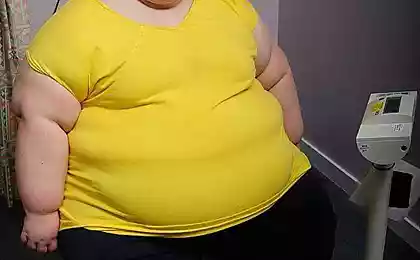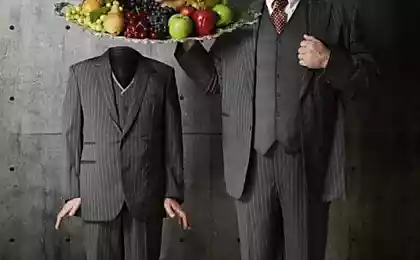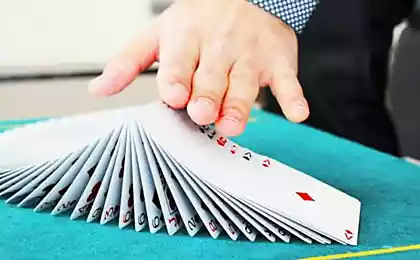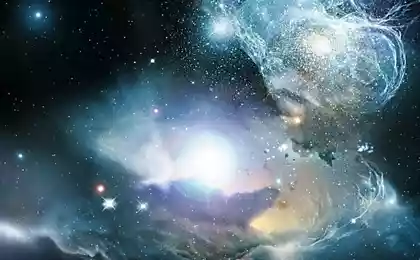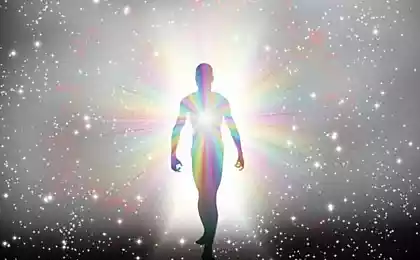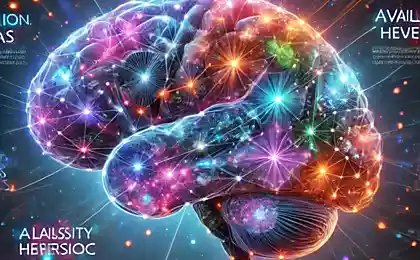1845
Scientists and magicians disclosed a method of deception of the mind

If you've come to the magic show, then you almost certainly have seen a fascinating focal point in which the showman saws his assistant in half
The woman lies: it seems that her body was stretched on a table or any box. As if a magician locks her inside of a cabinet (usually its head and legs sticking out from both sides, revealing move) and begins to saw her in the waist area. After a few agonizing minutes of suspense, he again connects two parts of a woman and her body is intact.
This focus, submitted nearly a century ago, is one of the oldest in the magic business. Over time, the methods of magicians have become more complex, but the illusion continues to live, because the weaknesses of the human mind is very predictable. Tricks of this kind are based on gaps in our perception - on how the brain interprets the environment, based on information collected sensory organs, including the eyes.
Researchers studying the brain are connected to the world of magic, to learn how to cheat tricks our mind. This new discipline, which appeared just five years ago, often referred to neyromagiey.
Neuroscientists and psychologists are studying the work of the mind and emotions influence our reactions. These scientists have begun to cooperate with magicians, to understand how tricks can manage critical attention and understanding. This study gives scientists an opportunity to understand how they can affect the mind, not only for entertainment, but, for example, to improve driver safety.
"We are studying illusions to understand the fundamental aspects of visual perception, - says Susana Martinez-Conde, a visual neuroscientist at the Barrow Neurological Institute in Phoenix, USA. - These illusions often come from the world of art, and not from the scientific world. " These include the magical art - for example, two-dimensional images that create the illusion of three-dimensionality.
Martinez-Conde and her husband Stephen Macknick also a neuroscientist at Barrow, are the authors of books on the subject, which was released in 2010. The researchers came to the idea to combine magic and science in 2007, when they organized a conference on the science of consciousness (the person is conscious when it is fully awake and aware of their behavior and their environment). At a conference in Las Vegas, they worked with famous magicians such as Raymond Joseph Teller of the famous team of illusionists Penn & Teller.

Susana Martinez brain researchers Conde and Stephen Macknick use the art of illusion, to gain insight into how the human brain perceives the world. "Illusions occur where a picture of the world that the brain has built for us, there are gaps," - says Martinez-Conde.
Too much information
People believe illusions, such as sawn woman, because the brain is constantly updates the information about the real world in order to understand it. For example, when we see a cow or a horse behind the fence posts, we automatically "complement" of the animal's body, which is hidden from our view. Although we see only part of the animal, we assume that there is a whole animal.
Each human eye is connected to the brain via the optic nerve. It transmits all the visual information that takes the eye. The brain processes this data to compare with reality as we know it.
Magicians rely on the tendency of the brain to perceive objects in the expected direction. This tendency explains the success of jugglers that deceive people by known tricks with ropes, rings, spoons, and dollar bills. For example, a study Martinez-Conde and Maknika found that when you see the magician tosses a coin up and down in one hand and then as if throwing a coin in the other hand, the audience actually "see" as nonexistent coin flying from one hand to another. This trick works well only when the viewer actually sees a coin that is thrown up and down before they realize the fake throw.
Anthony Barnhart, a professional magician and a graduate student in the field of cognitive psychology at the University of Arizona, the magic began at age 7, and it led him to the study of psychology. Now Barnhart uses magic in the laboratory as a tool for the study of attention and perception.

Professional magician and researcher Anthony Barnhart performs "card cascade". Barnhart uses magic as a tool for the study of attention and perception, or how the brain interprets the environment, based on the information which is obtained by the sensory organs, including the eyes.
He came up with one focus, to explore "blind spots" in our attention. Barnhart shows viewers a silver coin before you put it on a tray with a bright pattern. He covers the coin cloth napkin and puts another about first. In the eyes of the audience silver coin slides through a tray toward the second napkin. (Coin is located on a small piece of tissue that is in harmony with the color of the tray. Barnhart pulls her with an invisible thread attached to the fabric, moving it - and coin - in the tray.)
While the coin moves Barnhart looks into the cup and then shows the audience that it is empty. This focuses attention on it and spectators on the plate rather than the coin. He puts the cup on the first napkin. Then he puts another cup for the second napkin. When he raises both cups, surprised many viewers understand that the coin is not where they expected.

"Do not be blind" spots in this image out of focus show where those who caught the focus Barnhart with a coin, looked at a moment when the coin tray half crossed. "Blind" spots show where at that moment watched the people who did not notice the movement of the coin. The locations of the two groups is not much different. This suggests that those who did not notice the movement coins did so because of "blind spots" in their attention.
Understanding the principles of the wrong orientation of the brain can be used far beyond the magic. One area of research that Martinez-Conde and Maknik are promising, is the interaction between attention and emotion.
Magicians succeed in using comedy to evoke emotion in his audience at the very moment when it is most advantageous to create a deception or illusion. This ability could be useful for rehabilitation of people who have suffered a brain injury, and those who have trouble keeping attention, says Maknik.
Bluish honey puzzled French beekeepers
The friendly staff of the Russian Post: Go away, sssuka! (8 pics + 1 video SIFCO +1)

